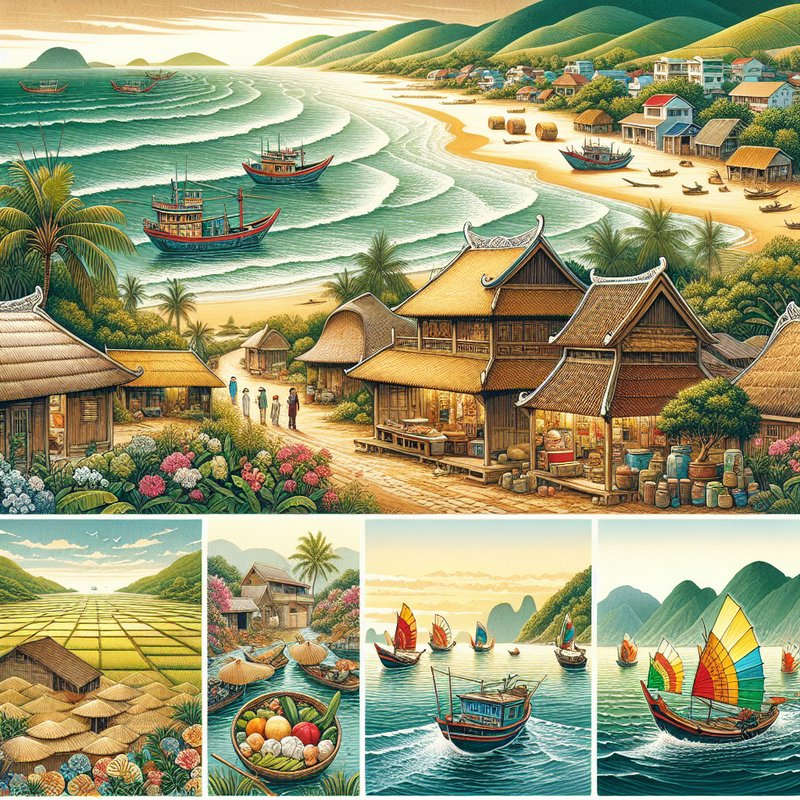The Timeless Charm of Vietnamese Coastal Architecture

The coastal villages of Vietnam are marked by their unique architectural styles, influenced by both indigenous designs and colonial heritage. Traditional wooden houses, often elevated on stilts, merge seamlessly with modern structures, reflecting an evolution that respects both history and contemporary needs.
Walking through these villages, one can observe how local craftsmen use natural materials like bamboo and thatch to construct homes that are both resilient and environmentally conscious. The architectural landscape not only serves aesthetic purposes but also reflects the community’s adaptability to their maritime environment.
The Vibrant Coastal Culture and Traditions

Coastal villages in Vietnam are home to dynamic cultural traditions that have been passed down through generations. The sea is central to life here, influencing not only the economy but also the festivities and daily practices of the community.
Local festivals, often held in honor of the sea, are vibrant events that feature traditional music, dance, and rituals. These celebrations are not only a chance to pay homage to the ocean, but also serve as a vital means of community bonding and cultural preservation.
A Culinary Voyage: Seafood and Coastal Cuisine

The culinary offerings of Vietnam’s coastal villages are a gastronomic delight, characterized by a variety of seafood freshly harvested from the waters. Local dishes are often spiced with herbs and ingredients unique to the region, offering a taste that is authentically Vietnamese yet distinctively coastal.
Visitors can indulge in everything from grilled fish to exotic shellfish, each prepared with techniques honed over generations. Cooking classes offered in some villages allow tourists to dive deeper into the culinary arts, providing a hands-on experience in preparing these flavorful dishes.
The Livelihoods Shaped by the Sea

The livelihoods in Vietnamese coastal villages are intricately linked to the sea, with fishing and aquaculture standing as mainstays of the local economy. Generations of families continue to fish these waters, using methods both ancient and innovative to sustain their way of life.
Beyond fishing, these villages have embraced tourism as a crucial economic complement. Visitors are invited to engage with the community, participating in eco-tours and learning about sustainable practices. This interaction not only supports the local economy but also fosters a mutual respect and understanding between locals and tourists.

Leave a Reply